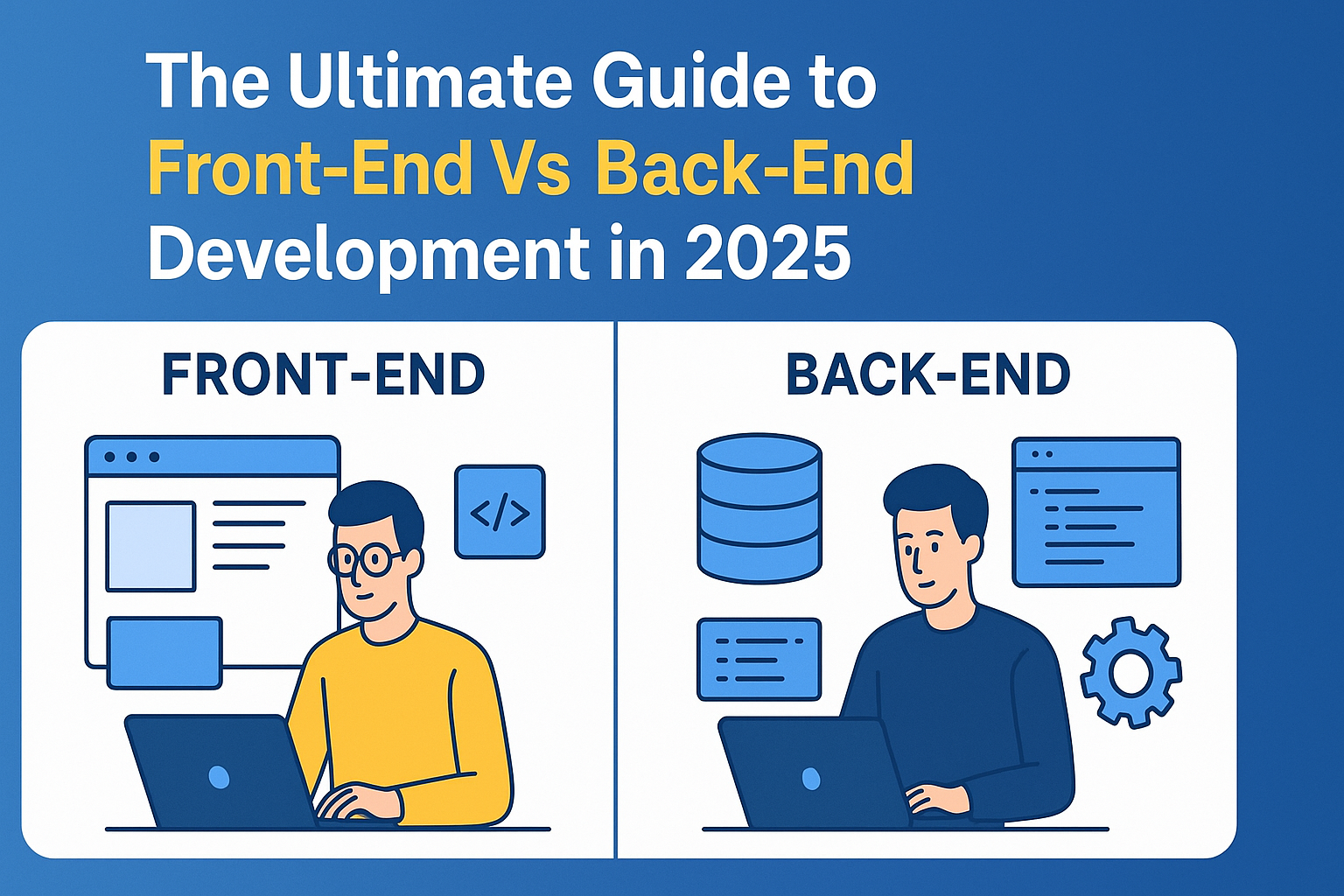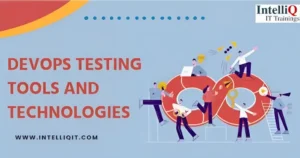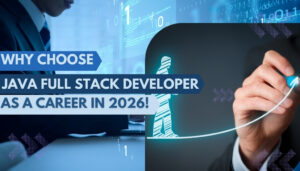In the digital era, all companies from start-ups to international companies, rely upon the online presence. The online platforms, websites, and web applications are no longer an appendix, but the main part of the brand image, customer relations, and revenue.
But have you ever questioned who is behind the concept of coming up with these powerful digital products?
Two major occupations dominate this sphere, and they include Front-End Developers and Back-End Developers. The two are necessary in web development, although their tasks, tools and skills are unmeasurably different and complementary.
The paper will discuss in depth the difference between front-end and back-end programmers, skills, tools, frameworks, career opportunities and finally how Full Stack Developers can be incorporated in the front and back-end developer worlds.
1. What is Web Development?
Web development refers to the development of websites and web applications that are operated on browsers. It involves the design, programming, and support of the visual aspect that the users see along with the internal logic, which is the engine under the hood.
This ecosystem is split up into two primary classifications:
- Front-End Development (Client-Side)
- Back-End Development (Server-Side)
Both cooperate harmoniously to provide a total, interactive, and functional web experience.
2. What is Front-End Development?
Front-End Development involves the development of the section of a web page or an application that the user can see and touch such as buttons, menus and design. It is a coding language that consists of HTML, CSS and JavaScript that ensures web pages appear and perform well on every device.
When you come to a website and love their layout, animations, navigations bar, or the way it looks on a mobile phone, then you are enjoying the efforts of a front-end programmer.
The front-end developers are in charge of making sure that the user interface is not only pleasing to the eye but also easy to use and smooth performing across different products and browsers.
Key Responsibilities of a Front-End Developer:
- Creation and design of the visual parts of a web application or site.
- Getting the websites to adapt to the different screen sizes of desktop, tablet, and smartphone.
- Working with the UI/UX designers to convert the visual designs into a working code.
- Performance re-optimisation to increase loading speed and resource usage efficiency.
- Keeping the design and code structure of the project in sync throughout.
Core Front-End Technologies
Static designs are made lively through the use of a mixture of languages and frameworks by front-end developers:
- HTML (HyperText Markup Language): Specifies the layout of a web page.
- CSS (Cascading Style Sheets): Provides decoration, colours, and layouts.
- JavaScript: Incorporates user interaction and dynamic behavior.
Popular Front-End Frameworks & Libraries
- React.js – Created by Facebook, it is very popular for dynamic user interfaces.
- Angular – The application-building framework by Google, which is quite scalable.
- Vue.js – A beginner-friendly and minimalistic JavaScript framework.
- Bootstrap – A Sass framework that focuses on mobile and responsive design.
Essential Front-End Tools
- VS Code – An efficient Code editor for development.
- Git & GitHub – Tools for version control and collaboration.
- Webpack / Parcel / Vite – Asset optimization through bundling.
- Chrome DevTools – Debugging and performance testing.
Soft Skills for Front-End Developers
- Demonstrates meticulousness in every detail.
- Comprehension of the user’s actions and design consciousness.
- Interacting and working together with the design and backend departments.
- Being flexible with new frameworks and design trends.
3. What is Back-End Development?
The Back-End Development is the part of the web application or the application which works on the background.
It is concerned with information, accessibility to users and how to interact with the server which cannot be physically touched but which makes everything to be coordinated well.
It connects the user interface (front-end) and information storage (database), it is merely the head of a site that makes sure that everything is working in proper way.
Back-End Developer’s Basic Duties
- Developing the server-side logic and programming interfaces to handle user requests.
- Connecting the software to the database for storing and accessing data.
- Making sure that the website works well, is big enough for more users, and is safe from hacking.
- Regulating the locations where the website is hosted and putting the website online.
- Detecting and fixing problems as well as maximizing server speed.
Core Back-End Technologies
Programming Languages:
- Java – It is a very powerful, object-oriented language that is extensively used in the development of enterprise applications.
- Python – It is renowned for its simplicity and ease of use.
- Node.js (JavaScript Runtime) – This allows JavaScript to work on the server side.
- PHP, Ruby, C#, and .NET – All these are known as the other main options for the backend.
Databases:
- Relational Databases: include MySQL, PostgreSQL, and Oracle.
- NoSQL Databases: MongoDB, Cassandra, and Redis are examples of such databases.
Servers and Frameworks:
- Spring Boot (Java) – It is a framework that allows streamlining the backend development with prebuilt configurations.
- Django / Flask (Python) – They are powerful frameworks for rapid development.
- Express.js (Node.js) – It is a minimal and flexible Node.js framework.
Essential Back-End Tools
- Postman / Swagger – Use for the testing of APIs.
- Docker & Kubernetes – Utilize for the containerization and deploying.
- GitHub Actions / Jenkins – Apply for the CI/CD automation.
- AWS / Azure / Google Cloud – Deploy for the hosting and storage in cloud-based services.
Soft Skills for Back-End Developers
- Analytical and logical reasoning ability.
- Good grasp of algorithms and data structures.
- Teamwork and documentation abilities.
- Familiarity with security controls and data privacy.
4. Front-End vs Back-End Developer: The Core Differences
| Aspect | Front-End Developer | Back-End Developer |
| Focus Area | User interface (UI) and client-side interaction | Server-side logic and database operations |
| Main Goal | Create a visually appealing and interactive experience | Ensure application performance, functionality, and security |
| Languages Used | HTML, CSS, JavaScript | Java, Python, Node.js, PHP, C#, Ruby |
| Frameworks | React, Angular, Vue.js, Bootstrap | Spring Boot, Django, Express.js, .NET |
| Databases | Generally consumes APIs to fetch data | Creates, manages, and connects to databases |
| Key Tools | VS Code, Chrome DevTools, Git | Postman, Docker, Jenkins, GitHub Actions |
| Career Focus | UI/UX implementation | Server-side development and architecture |
| End Users | Directly interacts with website users | Works behind the scenes; interacts with front-end through APIs |
5. How Do Front-End and Back-End Work Together?
The front-end and back-end developers, while having different functions, work together all the time.
The interaction between them is as follows:
1. The front-end makes requests, i.e., a user filling out a form or pressing a button.
2. The back-end gets the request, works on it, does the database interaction, and replies with the corresponding response.
3. The front-end shows the result to the user, e.g., confirmation messages, data updates, or visuals.
APIs (Application Programming Interfaces) facilitate this interaction and JSON or XML formats are used, thus ensuring that there is no interruption in the data flow between the client and server.
6. The Rise of Full Stack Developers
With business mobility and the economy in demand, the need to get professionals capable of dealing with both front and back-end tasks has increased exponentially.
Get in Full Stack Developer, a professional who knows the whole web development cycle, a design to deployment.
The Full Stack Developer is the person who connects the two worlds, and he or she is vital in start-ups, enterprise solutions and freelance projects.
- Full Stack Developer Skills Required
- Front-End Skills: HTML, CSS, JavaScript, React/Angular/Vue
- Back-End Skills: Java, Spring Boot, Node.js, or Python frameworks
- Database Management: MySQL, MongoDB, or PostgreSQL
- Version Control: Git, GitHub
- DevOps Tools: Docker, Jenkins, AWS basics
- Soft Skills: Team collaboration, project management, and problem-solving

7. Career Opportunities
Front-End Developer Roles:
- UI Developer
- Web Designer
- JavaScript Developer
- Front-End Engineer
Back-End Developer Roles:
- API Developer
- Java Developer
- Database Engineer
- Software Engineer (Server-Side)
Full Stack Developer Roles:
- Full Stack Engineer
- Software Developer
- Application Developer
- Technical Architect
Average Salaries (India)
| Role | Entry-Level | Mid-Level | Senior-Level |
| Front-End Developer | ₹3.5 – ₹6 LPA | ₹6 – ₹10 LPA | ₹12 – ₹18 LPA |
| Back-End Developer | ₹4 – ₹8 LPA | ₹8 – ₹14 LPA | ₹15 – ₹22 LPA |
| Full Stack Developer | ₹5 – ₹10 LPA | ₹10 – ₹18 LPA | ₹20 – ₹30 LPA |
8. How to Choose Between Front-End and Back-End?
Your choice depends on your interests and strengths.
Choose Front-End if you love:
- Visual design and creativity
- Working with user interfaces
- Instant visual feedback
The Back-End if you enjoy:
- Logical thinking and problem-solving
- Working with data and algorithms
- Ensuring performance and security
Choose Full Stack if you want:
- A holistic understanding of web development
- Better career flexibility
- Higher growth and income potential
9. Learning Path for Front-End and Back-End Developers
Front-End Learning Path
- HTML, CSS and JavaScript would be the first languages you would turn to.
- You would then put into practice the concepts of responsive design and accessibility.
- React, Angular or Vue.js would be the framework to master next.
- The knowledge of RESTful APIs and version control would be a great advantage.
- Finally, you would create real-world projects that would speak of your skills.
Back-End Learning Path
- Become proficient in coding with languages like Java or Python.
- Have a good grasp of database management (MySQL, MongoDB).
- Become a master in using frameworks like Spring Boot or Django.
- Acquire knowledge of APIs, authentication, and security.
- Get acquainted with DevOps and deployment fundamentals.
10. Why Java Full Stack Development is the Best Career Option
Java Full Stack Development shines through among the full stack technologies for the following reasons:
- Java is universally recognized as one of the most reliable and business-oriented languages.
- Spring Boot is the most user-friendly back-end development framework and minimizes the time to market.
- The combination of Spring Boot with modern front-end frameworks like Angular or React is smooth.
- There is great demand for such a dual-skilled developer in IT companies.
A Java Full Stack Developer can build complete applications from front-end UI to back-end APIs and even deploy them to cloud platforms like AWS or Azure.
11. How IntelliQ IT Trainings Helps You Become a Full Stack Developer
If you’re serious about building a career as a Java Full Stack Developer, you need practical, hands-on training guided by industry experts.
That’s exactly what IntelliQ IT Trainings, located in Ameerpet, Hyderabad, offers.
Highlights of IntelliQ IT Trainings Java Full Stack Developer Course
- Complete Curriculum: HTML, CSS, JavaScript, Java, Spring Boot, Hibernate, API Rest, MySQL, React/Angular.
- Real-Time Projects: Gain exposure to live projects of industry-standard.
- Professional Trainers: Be tutored by former years of development and corporate experience.
- Placement Assistance: Career guidance, resume construction and mocking.
- Online and offline flexible learning.
Lower Costs Structure: Quality training at reasonable costs.
This program is designed to help students, graduates, and working professionals become job-ready Full Stack Developers capable of handling real-world projects.
Conclusion
The Front-End and Back-End Developers are equally important in the modern web development scene; one gives a website its look while the other creates its functionality.
If you dream of being a master of both, Full Stack Development is the path that leads to taking control of the whole software development cycle.
In the world of learning from the best, IntelliQ IT Trainings in Ameerpet, Hyderabad, is reputed to be one of the best. With professional trainers, practical projects, and a Java Full Stack Developer curriculum that is future-ready, IntelliQ IT Trainings gives you all the necessary tools to start an IT career.
IntelliQ IT Trainings offers the Best Java Full Stack Developer Training in Ameerpet for both a beginner who is interested in front-end development and a professional who is going towards full-stack expertise to make their dreams come true.






